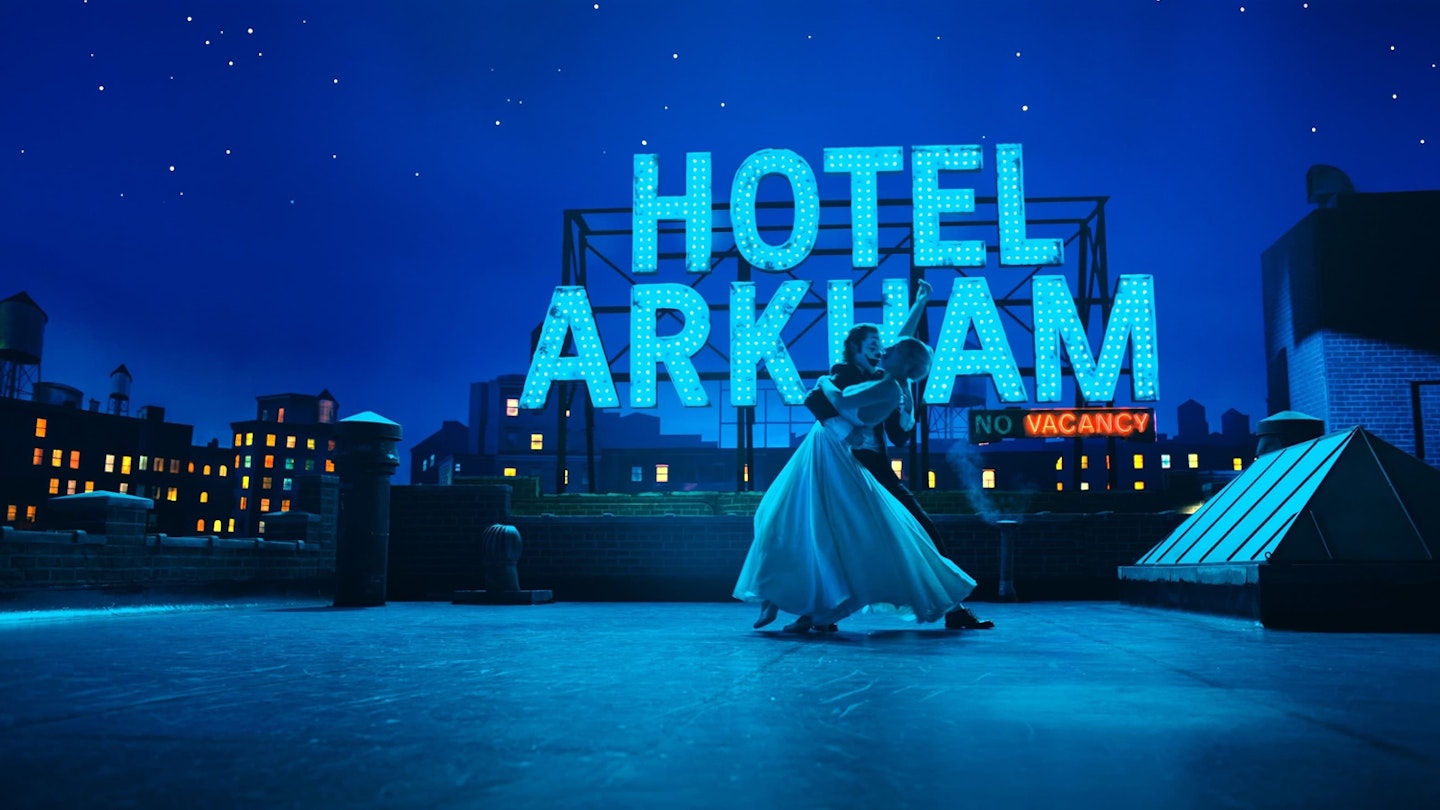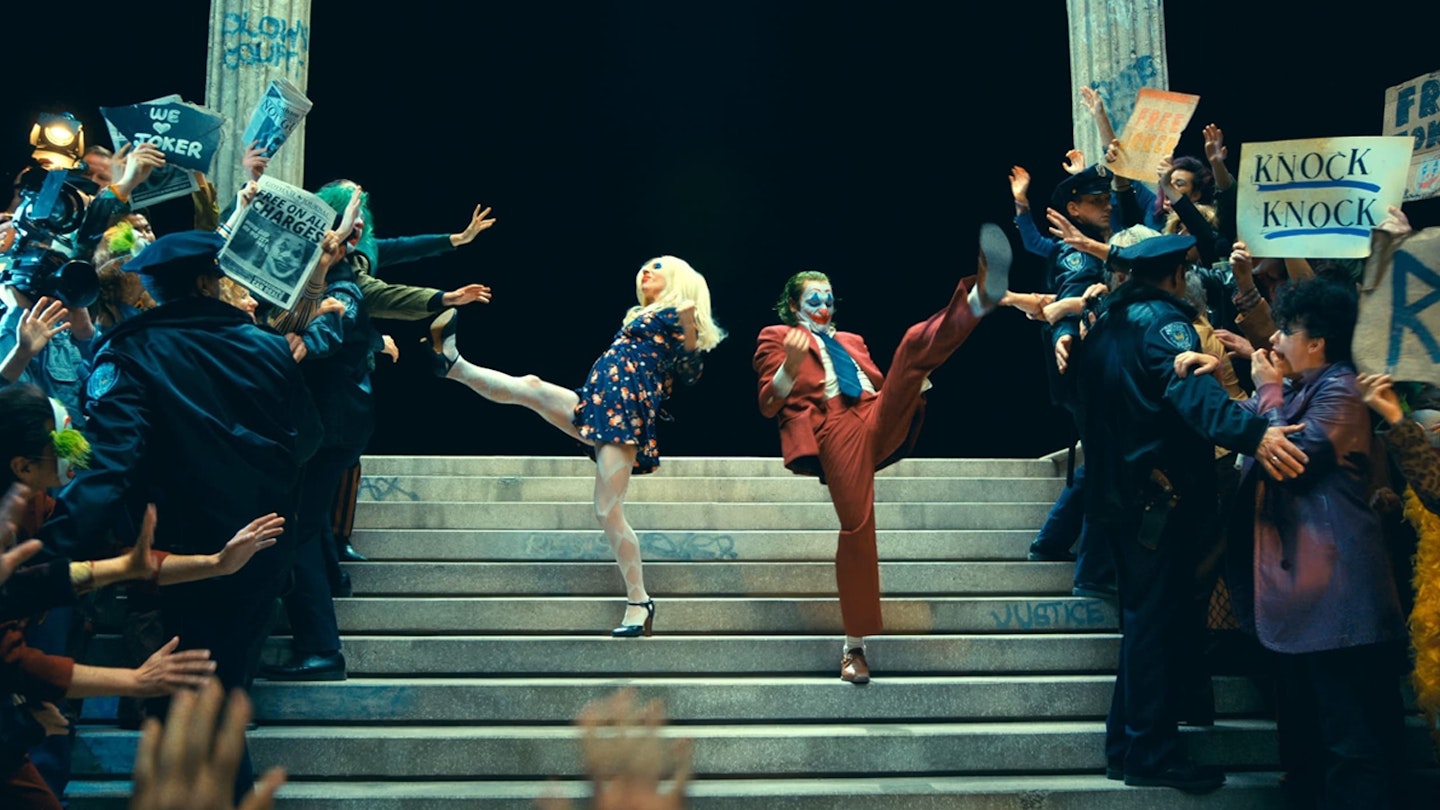Who is the Joker? Ever since being introduced in the comics as Batman’s first and foremost foe in 1940, this question has never truly been answered. Joker’s backstory is forever foggy, multiple stories from a cackling unreliable narrator, the truth left to fizz in a vat of acid. Todd Phillips’ darkly beautiful 2019 standalone spin-off movie Joker offered an unexpected new backstory for the supervillain, heavily inspired by Alan Moore’s Batman: The Killing Joke and Martin Scorsese’s The King Of Comedy: introducing us to Arthur Fleck (Joaquin Phoenix), a sad clown abandoned by a cruel world, taking on the Joker mantle almost out of sheer desperation.

So, who is Arthur Fleck now? The amusingly Nouvelle Vague-esque title Folie À Deux alludes to a burgeoning romance, but also his fragmenting identity crisis. Central to this new film is a question of self: is the Joker simply a delusional character living inside him, a reaction to his horrific abusive childhood? Or is he just a bad person? At one point, Arthur offers up a knock-knock joke, the script leaving “Arthur Fleck who?” to hang, rhetorically unanswered.
Where the first film was relentlessly oppressive and bleak, there is an oddly hopeful tone here.
In the first film, Phoenix’s Oscar-winning performance was a masterpiece of despair, his bony body prostrate with sadness, forever twisted in involuntary laughter. This Fleck is more contained. Initially medicated at Arkham, One Flew Over The Cuckoo’s Nest-style, his disturbed mind lurks quietly. The laughter now mostly comes from the prison guards, led by Brendan Gleeson’s vindictive screw. “You got a joke for us, Arthur?” they ask him spitefully, another instrument of the state forsaking him.
After the events of the first film, Arthur is also now a minor celebrity, an icon of a counter-cultural movement, and the subject of a TV movie about his life (which seems to be Phillips acknowledging the billion-dollar success of the first film, and the debate it spawned). That gets him the attention of Harley ‘Lee’ Quinn, played by Lady Gaga with tenderness, largely swerving the nasally “Mr J!” mannerisms made famous by voice actor Arleen Sorkin and Margot Robbie.
Theirs is a gloriously twisted, darkly funny meet-cute. “What’s a nice guy like you doing in a place like this?” Lee asks. “I killed five people,” Arthur responds. They bond over shared trauma, and a Bonnie-and-Clyde us-against-the-world romance soon blossoms. Befitting a couple of broken souls, their affair is simple, their chemistry immediate. Slowly, surely, Lee coaxes out Arthur’s inner Joker — and she does it all through, erm, the power of song. Yes: despite the reticence from the filmmakers and marketing to label it as such, this film is, in fact, a musical.

Comic-book fans should not come to Folie À Deux expecting a conventional superhero approach here, then — just as musical-theatre fans should not expect world-class standards of singing and dancing. It’s something scrappier and stranger, the brooding cello of composer Hildur Guðnadóttir now rubbing shoulders with a bold and brassy big-band orchestra. The mostly familiar songs have one foot in the real world and one giant clown foot in a fantasy land, evoking the soundstage set-ups of golden-age Hollywood musicals, smoky jazz clubs, variety acts like Sonny and Cher, even Looney Tunes cartoons. There’s inevitably some irony to this — it echoes at times the nostalgic-trauma-homage approach of WandaVision — yet it all feels surprisingly earnest. All these two want to do, they affirm to each other, is “build a mountain from a hill”.
The unorthodox, unvarnished delivery of the songs from Phoenix and Gaga sells so much that a dialogue-light script does not — Burt Bacharach’s ‘Close To You’ has rarely been performed as chillingly — yet where the first film was relentlessly oppressive and bleak, there is an oddly hopeful tone here. Arthur’s performance of ‘For Once In My Life’, in particular, is a curious blend of quiet menace and truly heartfelt passion.
It ultimately escalates to a courtroom drama of farcical Foghorn Leghorn proportions, and while the final act does not quite build the same tension and drama as the first film’s remarkable doomed talk-show climax, it does manage to draw a neat bow on this particular story. In a cinematic climate saturated by superheroes, supervillains, and even Jokers (there were at one point three actors simultaneously in the role), Phillips, Phoenix and now Gaga have fashioned a genuinely original narrative, even in its obvious magpie’s-nest borrowing. Folie À Deux is not the definitive Joker story — maybe there will never be one — but no other adaptation has burrowed this far under the character’s face-painted, mutilated skin.








